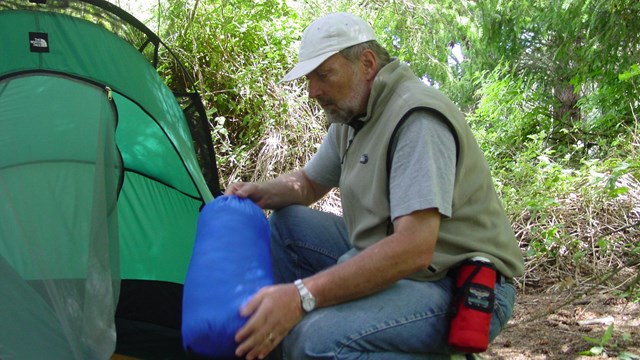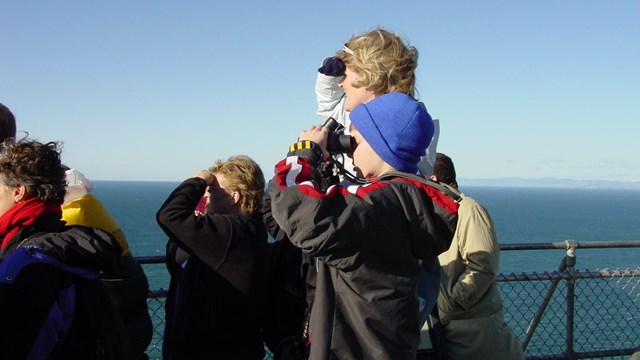
NPS Photo There are many outdoor and indoor activities in which visitors may participate during their trip to Point Reyes. We recommend that visitors stop by the Bear Valley Visitor Center as they enter the National Seashore in order to get better oriented to the park, to find out what activities are available during their stay, and to find out about road, trail and other closures. Visitors interested in learning more about the human and natural history of the Point Reyes area can participate in free Ranger-Led Programs. The Point Reyes National Seashore Association and the Miwok Archeological Preserve of Marin also provide guided tours and classes within the National Seashore. 
NPS Photo Leisurely drives wind their way over Inverness Ridge and through the pastoral lands to beaches, to the historic lighthouse, and to wildlife viewing areas, such as the tule elk range on Tomales Point or the Elephant Seal Overlook near Chimney Rock. Birding is exceptional throughout the seashore, especially during fall and spring migrations. The Point Reyes headlands and park beaches are excellent places to view the annual gray whale migration, which is best from January through April. Many visitors enjoy picnicking at beaches or at some beautiful vista along the park’s trails. About 240 kilometers (150 miles) of trail beckon hikers, mountain bikers, and horse riders to explore the backcountry. (NOTE: Some restrictions apply to trail usage by bikers and horses, so please pick up free park maps with specific trails marked at a visitor center.) 
NPS Photo Many first-time visitors arrive at Point Reyes National Seashore thinking that they can see everything here within a few hours, or at most in a day. Those who have visited Point Reyes have realized that to really explore Point Reyes requires much more than a day, and some who have visited frequently for years still discover something new with each visit. Please check out our Trip Ideas page for some ideas on what to do during your first visit. But you don't need to feel limited to what is described there. Feel free to explore this Plan Your Visit section for other possibilities, and then come explore Point Reyes. Please, Leave No Trace. Take only pictures, leave only footprints. Learn how to enjoy your park while leaving it in as good as, if not better, condition as you found it. Point Reyes National Seashore also has a very active volunteer program. Volunteers are a vital part of protecting and preserving Point Reyes. Over the last few years, volunteers have invested over 50,000 hours removing nonnative plant species, monitoring wildlife, providing information to visitors, working at the Morgan Horse Ranch, protecting the resources, and maintaining the trails. There are many opportunities for someone interested in volunteering their time to help the park. 
The NPS App
The NPS App is the new official app for the National Park Service with tools to explore more than 400 national parks nationwide. 
Hiking at Point Reyes National Seashore
The National Seashore has about 150 miles (240 kilometers) of hiking trails to explore. Learn how to keep your adventure safe and enjoyable. 
Hike-in and Boat-in Backcountry Camping
Point Reyes National Seashore offers year-round camping. Permits must be obtained before starting a trip. 
Kayaking at Point Reyes
The most popular area for kayaking in the Point Reyes area is Tomales Bay. Learn how to prepare for your trip and make it a safe experience. 
Ranger-guided Programs
Visitors are invited to explore the wonders of Point Reyes and learn more about the National Seashore’s natural and cultural history. 
Beach Fire Permits
Get a permit to have a beach fire in Point Reyes National Seahshore. 
Viewing Tule Elk
Tule elk can be found at several locations within the park, but the best chance of seeing them is at the Tule Elk Preserve at Tomales Point. 
Viewing Elephant Seals
While elephant seals are present around the Point Reyes Headlands year-round, hundreds return in the winter to birth their pups and to mate. 
Watch for Whales at Point Reyes
Gray whales migrate past Point Reyes from December through May and can frequently be seen from the Lighthouse and Chimney Rock areas. |
Last updated: April 28, 2024
